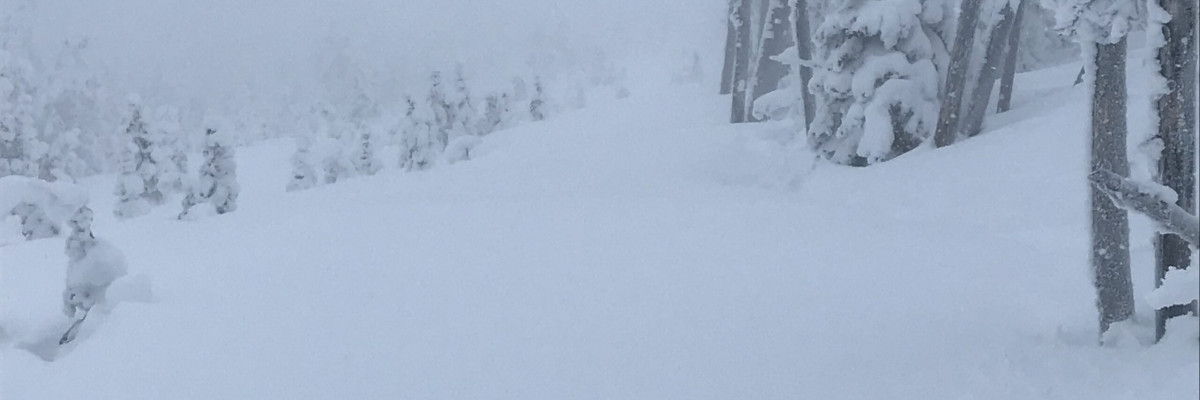The current avalanche danger is CONSIDERABLE in the West central Montana backcountry on wind loaded slopes. This means careful snowpack evaluation, cautious route-finding, and conservative decision-making are essential to recreate today. All other slopes the danger is Moderate. With changing weather conditions, the avalanche danger will rise.
Good morning, this is Travis Craft with the West Central Montana Avalanche Center’s avalanche advisory for December 28, 2017. This danger rating does not apply to operating ski areas, expires at midnight tonight and is the sole responsibility of the U.S. Forest Service.
Weather and Snowpack
Mountain temperatures range from 16 F to 32 F in the region. In the Bitterroot winds are 4 mph with gusts of 5 out of the SSW. In the northern part of the advisory area, at Point Six, winds are reading 20 mph with gusts of 30 mph out of the W. The forecast area received 3 to 8 inches of new snow in the last 24 hours.
Steve and I toured in the Rattlesnake yesterday. We did get propagation on the Thanksgiving day crust. We did not get any collapsing or shooting cracks. We saw active transport of snow creating wind slabs. We have public observations from Gash Point in the Bitterroot and Lolo Pass. John Lehrman from Downing Mountain Lodge in the Central Bitterroot is worried about the tipping point that the facets on the Thanksgiving crust can take.
The primary avalanche problem in the Rattlesnake, southern Swans and southern Missions is wind slabs. These slabs will be sensitive to human triggers and grow in size throughout the day. The Bitterroot range will see this problem develop with wind speeds increasing in the storm.
The Primary avalanche problem in the Bitterroot is storm slabs. These slabs are increasing in size and are coming in upside-down. These slabs will be sensitive to human triggers and will grow throughout the day. The Rattlesnake, southern Swans, and southern Missions storm slabs will develop during the day with the addition of more snow.
The second avalanche problem throughout the advisory area is persistent slabs. These layers will become more reactive to triggers with the addition of new snow. We have poor snowpack structure throughout our advisory area. Look for clues from the snowpack shooting cracks and localized collapsing. Dig a pit on low angle terrain in a safe spot out of runout zones to see how the layers are adjusting to the new load.
Avalanche and Weather Outlook
The bottom line is the avalanche danger will increase today with new snow and wind. Pay close attention to changing conditions and reevaluate terrain choices throughout the day. Careful snowpack evaluation, cautious route-finding, and conservative decision-making are essential to recreate today. A potent storm is entering our area today. Here is a link to the discussion.
If you are out in the backcountry, please send us your observation, these are very helpful in producing the advisory. I will issue a weather update tomorrow December 29, 2017.
Ski and ride safe.
























